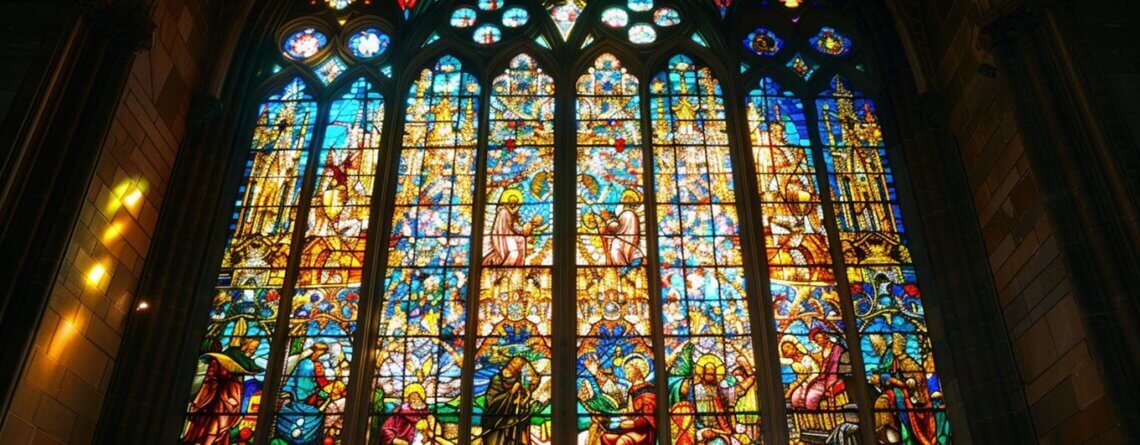All Saints’ Day 2024: Continuing to Honor the Faithful Departed
The Significance of All Saints’ Day
All Saints’ Day, celebrated on November 1st of every year, is an important day in the Christian calendar. This was a day specifically set apart to remember all known and unknown saints who had attained spiritual perfection and were resident in heaven.
It calls for the great Christian martyrs, the faith-filled heroes, and their holy deeds to be commemorated. It is not confined to individual saints, such as St. Peter, St. Mary, or St. Paul, but expands to include all who have gained eternal rest.
All Saints’ Day traces back to the early Church when it wanted to remember the vast number of martyrs who were killed on account of their faith. As Christianity spread throughout Europe, the Church set this day to celebrate those saints whose names were either forgotten or never canonized. This day falls on a quite solemn occasion and unites several Christian divisions: Catholics, Anglicans, Lutherans, and Eastern Orthodox.
It’s a day not only for remembering the dead but a spiritual reminder to the living ones. It is on this day that Christians are motivated to learn from the saints’ virtues and strive to live lives of holiness. As Christians come together for special masses and prayers in churches, All Saints’ Day gives Christians that rare opportunity to deeply connect with the spiritual legacies of the faithful who came before them.
The Meaning and History Behind the November 1st Holiday
The history of All Saints’ Day is deeply rooted in the early Christian Church. Initially, Christians celebrated the lives of martyrs who gave their lives for their faith during the most intense periods of persecution. As the number of martyrs kept on growing, it became difficult to go on celebrating each one separately.
By the 4th century, regional celebrations honoring the martyrs began to take shape, with the development of a universal feast day for them. In the 8th century, Pope Gregory III considered declaring November 1st to be All Saints’ Day and he dedicated one of the chapels in St. Peter’s Basilica to “all the saints.”
Later, in the year 837 AD, Pope Gregory IV extended the feast to the whole Church. This was probably a strategic move to have this feast concur with similar pagan festivals in northern Europe that were honoring the dead at about the same time.
All Saints’ Day allows the faithful to reflect upon the unity of the Church, both in heaven and on earth. It speaks hugely of the “communion of saints,” one of the very fundamental precepts of Christian theology.
This doctrine guarantees that saints who are in heaven pray for the living people to guide them toward spiritual growth. It also assures believers that physical death does not disconnect them from those who die but actually draws them closer together in the body of Christ.
What Traditions and Practices Are Associated with All Saints’ Day?
The ways that different Christian denominations observe All Saints’ Day vary. Yet, most of their customs and practices serve the same spiritual purpose, even though they may be expressed or carried out slightly differently.
Attending Mass and Offering Prayers
The most important part of All Saints’ Day is attending a special mass for Catholics and many Protestant denominations. During such services, Catholics pray for the souls of all saints and their sanctification. The mass on the day of solemnity is a moment of reflection when the congregation is asked to implore the intercession of the saints.
Lighting Candles for the Departed
Other traditions taken by many on All Saints’ Day are lighting candles in front of statues or icons of saints to symbolize that the light of saints’ lives goes on to lead the faithful. This is also one way of showing respect for the dead and remembering family or friends who have died.
Visiting Cemeteries
In many cultures, especially in Eastern Europe and parts of Latin America, families visit cemeteries on All Saints’ Day. Gravesites are often decorated with flowers, candles, and religious icons. This is a means of showing respect to one’s dearly departed, besides serving as a recognition of the eternity of the life-giving bond between the living and the dead.
Feasting and Family Gatherings
In other places, All Saints’ Day has taken on the nature of reunions and feasts. Special dishes, for instance, are made in some regions of Italy and Spain and then divided among family members. The tradition is communal, pointing to the reasons for the togetherness and the continuance of tradition from one generation to the next.
Dressing Up as Saints
For children, especially in Catholic schools, dressing up as their favorite saints is a very common thing to do on All Saints’ Day. This way, they have fun while learning about the lives of the saints. Also, the younger generation will get familiar with sainthood and try to be like them in living a virtuous life.
What Is the Difference Between All Saints’ Day and All Souls’ Day?
Though they are often confused, All Saints’ Day and All Souls’ Day are distinct in their focus and purpose. Here’s how they differ:
Focus of All Saints’ Day
All Saints’ Day is dedicated to the saints now in heaven who lived lives of extraordinary faith and virtue, now at rest in eternal glory. It is celebrated by the Church to honor their holiness and to inspire the faithful to imitate their example.
Focus of All Souls’ Day
All Souls’ Day, November 2nd, is for prayer and remembrance for all the faithful departed. It is not a day of celebration for the saints, as All Saints’ Day is, but rather for those in purgatory undergoing purgation in order to enter heaven. The prayers offered by the living on that day are meant to help souls in their journey toward eternal rest.
Different Liturgical Emphasis
While both days entail attending a mass, the tone during each church service differs. All Saints’ Day is a feast commemorating the triumph of the saints, and the tone of the hymns and prayers is joyous.
All Souls’ Day, however, is more mournful in tone as the adherents pray for the repose of the souls of the dead. Both days afford the believers an opportunity to reflect on life after death and the continuity between the living and the dead.
All Saints’ Day 2024: What to Expect
As November 1st, 2024, approaches, Christians worldwide will be again united in commemorating the feast of All Saints’ Day. Still, because of the increased proliferation of Catholics’ digital platforms for worship services, many churches now offer online masses, adding even more people to participate in this sacred day from their homes.
It is likely that traditional practices, such as visits to cemeteries and family gatherings, will continue; there could easily be a growing focus on virtual participation, especially for those who cannot participate in person.
In 2024, All Saints’ Day will probably regain some of its importance, especially in those locations where it has been secularized into a far less noticeable holiday. Churches could seize such an opportunity to remind congregants of the spiritual relevance of the day and reconnect with the younger generation, encouraging them to live their lives according to the example of the saints. Events like candlelight vigils and community prayers will likely hold an important place in celebrating this day.
All Saints’ Day Prayers: Deepening Spiritual Reflection
Of all the Saint’s Day traditions, prayer plays the most meaningful role. Many believers make use of the day to say prayers to their patron saints, asking for their intercession in personal matters.
Following are examples of traditional All Saints’ Day prayers:
The Litany of Saints
It means the invocation of the names of various saints in prayer and requesting their prayers and blessings. It is usually said at the mass of All Saints’ Day and may form a private devotion.
Prayer for Personal Sanctification
“Dear Lord, through the intercession of your saints, grant me the grace to live a life worthy of Your calling. Help me to follow in their footsteps and to strive for holiness in my daily actions. Amen.”
Prayer for the Faithful Departed
“Merciful Father, we pray for those who have gone before us in faith. Through the prayers of all the saints, may they find rest in Your eternal embrace. Amen.”
In many respects, All Saints’ Day is one of the most meaningful days in the year to so many Christians worldwide. It provides, once a year, an opportunity through prayer, reflection, and community celebration to reconnect with the departed in the communion of saints.










